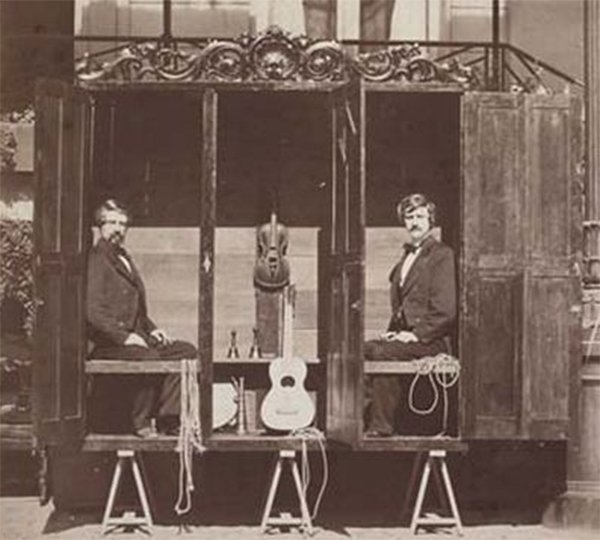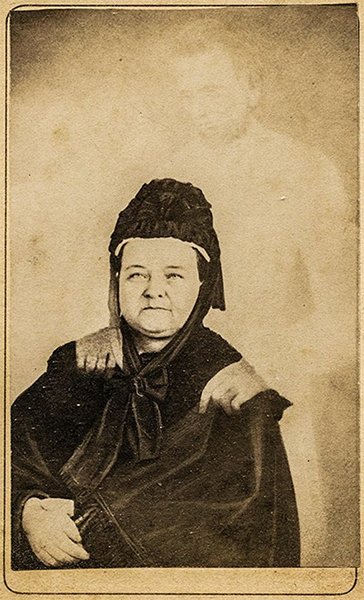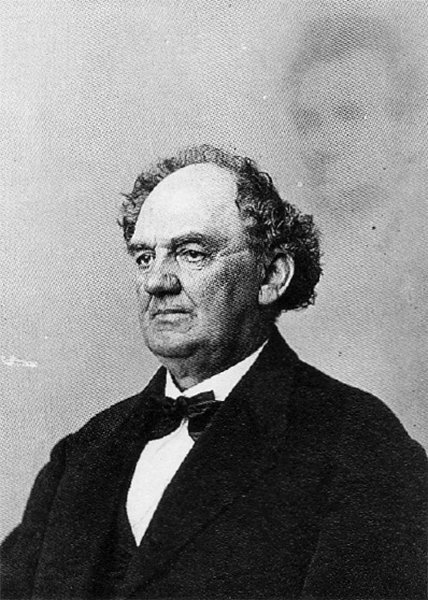5 People Who Used Magic To Publicly Debunk Fraudsters
When we watch a magician perform, part of the amazement comes from knowing it's a trick. We don't believe that he or she made an elephant vanish into thin air, but we marvel at the fact that they were able to make it seem that way.
Then there are fraudsters. Magicians hate fraudsters because they claim that their feats are real, and they take advantage (often financially) of people who really want to believe that they're talking to their dead mother. And when those magicians hit their breaking point with dirty con artists, the debunking is spectacular to watch.
The Amazing Randi Debunks Psychic Researchers
The Fraud:
In the 1970s, paranormal activity consisted mostly of charlatans that convinced people they could a) move things with their minds or b) bend spoons. Because if you have supernatural powers, those are definitely the top two things you'd do.
Pretending to bend spoons with your mind isn’t rocket science, or for that matter, something you need mental powers to do. The trick is best understood as simple sleight of hand: the magician can actually bend a spoon and pretend that it’s been bent by your mind, or cut the spoon and pretend that it’s melting in between your fingers, or just simply have a prepped spoon that has a weak enough integrity that it comes apart between your fingers. If you really want to pretend you have psychic powers you can always buy a self-bending spoon that really will bend with a minute amount of heat.
While this seems like a simple set of tricks, people really believed that there was something to the whole mental-powers thing. It's still in the cultural consciousness. Hell, even Neo did it in The Matrix to show that he was The One.
"There are exactly 7 spoons. Wait, no ... LINE!"
The Debunk:
One might think that a simple parlor trick wouldn't fool people completely, but it fooled enough of them to make scientists start studies on the subject. In the '70s, paranormal research was a thing, just like in Ghostbusters. But unlike Ghostbusters, there was some legitimacy behind their research, because they were ensconced in universities and attracting large sums of grant money. In 1979, Washington University in St. Louis got a $500,000 grant to study psychics, which attracted the much-eyebrowed attention of James "The Amazing" Randi.
Randi is one of the greatest debunkers of charlatans in history, but his greatest debunking was the one he pulled on Washington University’s paranormal researchers. To do so, he organized two teenage magicians, Steven Shaw and Michael Edwards, to expose the researchers as frauds. They came up with the code name "Project Alpha," because apparently even James Randi watched G.I. Joe.
Also, he is clearly an actual wizard.
Using common magic, his partners would bend spoons, keys, and other objects just like the other magicians you pay for a stage-show. The researchers then used these feats as examples of real paranormal phenomena. He kept conning the cons for four years before exposing them at -- where else? -- a press conference.
After all, he isn't the "Sort of Alright" Randi.
Harry Houdini Takes Down Mediums From Beyond The Grave
The Fraud:
Mediums have been around since people thought that Ogg could speak from beyond the grave. But "formal" seances got really big in the 19th century, when people realized that there was money in it. One famous medium, Mina Crandon, did her seances in the nude and produced "ectoplasm" from her ... ummm ... "underworld". So there’s that.
Keep your hands where we can see them, lady.
The seance takes advantage of the ideomotor effect: small involuntary actions we attribute to an outside source, like a spirit or demon, when in fact it’s just plain old us who are making the movements without realizing it. It’s kind of magical when you think about it: we have way, way less control of our movements than we think we do, and we’ll jump through all sorts of mental hoops to explain the feeling we get when we experience a lack of control. That’s why there are so many scams that use it: Ouija boards, spirit channeling, automatic writing ... all of this can be attributed to the ideomotor effect.
The Debunk:
Claims of being able to contact spirits were hard to fight. When people want to believe something, it’s hard to convince them otherwise (just ask a barefoot runner). But Harry Houdini came up with an ingenious way of disproving these frauds.
"Ectoplasm? Let's see you pull a string of shackles out of your thong."
He was so famous for his magic and his debunking, that he knew people would try to say they'd been in touch with him from beyond the grave. So he gave his wife Bess a secret code. That way, if he was able to communicate from the other side, his wife would know it was real. The message should have translated "Rosabelle, Believe," based on the code Houdini and his wife used on stage. She held seances for Houdini every year for a decade, with famous friends and mediums alike, but never once did the magic words reach her.
People still do Houdini seances to this day, because magic is still fun if you don’t think Houdini can teach you how to get out of death's handcuffs.
John Nevil Maskelyne Reverse Engineers A Fraud
The Fraud:
The Davenports were American hucksters that traveled the world with a magical cabinet, tricking people into thinking that they could summon spirits from the other side. What they would do is have themselves tied up, locked into the "spirit cabinet" with a bunch of musical instruments laid out of reach on the floor. They would even sometimes bring an audience member into the cabinet, just for funsies. Eerily, the musical instruments would start playing, and audiences on both sides of the Atlantic were caught up in the whole craze. Sometimes they were met with adulation, and sometimes they were met with riots, but they were always met with money. Even their detractors had to admit they were some plucky hucksters.
Know any Skynyrd?
All that the Davenports had really learned to do was escape ropes and get back into them before the audience knew what they were doing with their hands. Another magician named Kellar had invented his own rope trick, which the Davenports "borrowed" in order to pull off the effect. An audience member would examine the rope and make sure that there was no funny business. Then looping the rope around the wrist twice, the audience member would tie off the rope around the magician’s hands. This allowed the magician to escape with a simple turn of the wrist, which magicians still use to this day.
The Debunk:
Unfortunately for them, one of their English performances was witnessed by magician and clock maker named John Nevil Maskelyne. Thanks to a bit of stray light coming into the room, Maskelyne could see through a crack in the cabinet, clear as day, and noticed that one of the Davenport brothers was actually ringing a bell that was supposed to be rung by "spirits". His hands were obviously unbound. He declared that these guys were frauds, and everybody scoffed and harrumphed.
So to counter them, he reverse engineered his own magic cabinet, using his knowledge of magic and his experience as a clock maker. He toured with his own, presumably much better, spirit cabinet and actually made his career touring with it. Without the whole, you know, brazen lying.
He could also play the banjo with his mustache.
P.T. Barnum Takes Down A Spirit Photographer
The Fraud:
Photography is kind of a miracle. Before photos, all we had were paintings and drawings, and man, some of those were pretty lame. But photography was much more than just images. It created a new world where things could be proven, because the images were forever saved in glass. People trusted them, just like they do now. Unfortunately for them, they trusted William Mumler.
Mumler was a "spirit photographer," meaning that when he took pictures, a ghostly image would develop in the frame, oftentimes in the same image as their deceased friends or relatives. This convinced people that he could take pictures of spirits. It just so happened that the whole practice was very profitable for Mumler, and it made him quite a famous man. He even took a spirit photograph of Mary Todd Lincoln that convinced her that Abe was still watching over her from the afterlife. After all, he was in the photograph behind her! How could it be fake?
Obviously, Mumler was a huge fraud; he used prepared plates in a technique called double exposure, where the photographer uses a glass plate featuring the image of the (supposedly) deceased ... then places that in front of the plate which was used to photograph the (conned) client. The result was a ghostly image in the surrounding frame.
May the spirit of your husband always ghost-massage your shoulders.
The Debunk:
P.T. Barnum wasn't the most honest guy in history, but he was an honest liar. While he loved tricking the public in all sorts of ways, he also freely admitted that his performances were humbug -- that is, they were entertaining lies. That's why he published an entire book exposing frauds called The Humbugs of the World; one of whom was, of course, Mumler.
Barnum actually testified against Mumler at his fraud trial, as an expert on "humbuggery," which is a very specific type of expertise you now need a graduate degree for. He proved once and for all that Mumler was a fraud by taking a spirit photograph of himself and his old buddy Lincoln. Although Mumler did escape conviction, he never escaped his reputation as a fraud.
May the spirit of Lincoln always stare blankly at your bald spot.
Henry Gordon Debunked A Fraud With Nothing More Than A Magnet
The Fraud:
Uri Geller was one of the leading mentalists of his time. After being thoroughly owned by The Amazing Randi on TV (Google it -- he's done it several times), he unpacked a bunch of other tricks to keep himself relevant. One of them was getting a compass to move with his mind, convincing people that he had the mental powers to defy the forces of magnetism. Geller was simply hiding a magnet somewhere on his body.
Now you might think that you could check a person for any sort of hidden magnet, but the development of rare earth magnets in the '70s and '80s made them way easier to hide. Because even the small ones are absurdly powerful, it meant a fraudster could hide them in a shirt collar, in a cuff, or even in a shoe where nobody in their right mind would think to look. You could even perform the trick with one as little as would fit under your fingernail, from a considerable distance.
The Debunk:
It's one thing to debunk one guy one time. It's another to debunk frauds for twenty straight years, every damn Sunday. That's what Henry Gordon did in the Toronto Star. He knew a thing or two about this stuff, is what we’re saying.
Gordon simply strapped a magnet to his knee and appeared with Geller on a talk show. Turns out that, after much grunting, Geller wasn't able to move the compass after all. In reference to the incident, Gordon reportedly said: “His mind power wasn't stronger than my magnet," which is to say that the power of magnetism was stronger than the power of bullshit.













